Rediscovering a path to the Milky Way through archaeology
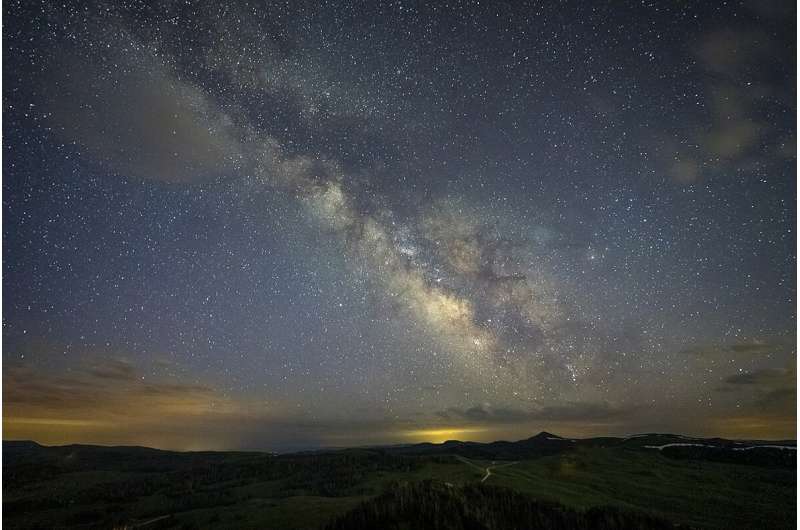
We're standing on a roadside at the edge of a muddy expanse. While I'm wearing rubber boots, Tim Pauketat is going to get his feet wet. He left his waterproof boots in Indiana, but this won't stop him from tromping out into the soggy, overgrown remains of the ancient city of Cahokia.
We're here because it's wet. Pauketat, the director of the Illinois State Archaeological Survey and an archaeologist who has studied Cahokia for close to 25 years, wants to see it flooded. Watching how the water flows here will help unlock some of the secrets of this place, he says.
We're here with ISAS research scientists Michael Aiuvalasit and Michael Farkas. Aiuvalasit, too, has forgotten his waterproof boots.
Farkas tosses a stack of lidar maps on the open tailgate of their truck and Pauketat lays out the day's mission. The lidar – a light detection and ranging sensor – highlights subtle changes in elevation that are otherwise difficult to see.
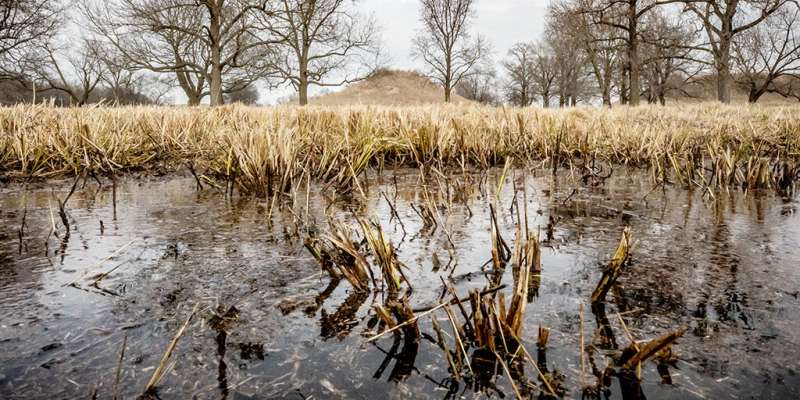
Pauketat points to a line on the lidar image that looks like a narrow street running north and south. The street – he calls it a causeway – extends from a main plaza, starting just south of Monk's Mound, the largest surviving mound, all the way to a pair of twin mounds that mark the southern boundary of the plaza. The causeway is straight as an arrow, and more than half a mile long.
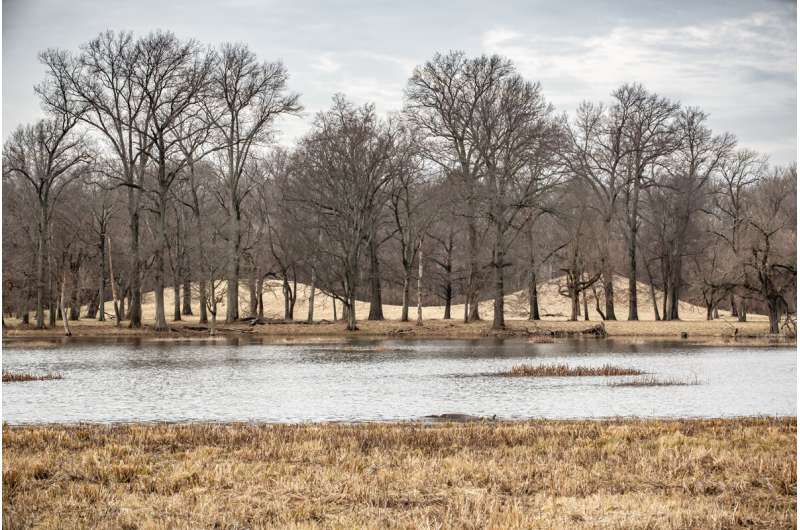
"We think the linearity of this is foundational," Pauketat says. "At the beginning of this particular city, somebody laid out a city grid, and then everything initially was put on that grid." That axis, marked by the causeway, is five degrees off true north. This orientation appears to reference celestial events, Pauketat says.
We leave the road and head out into a wild, soggy zone choked with trees. We are skirting alongside a pair of circular mounds, but it's easy to lose sight of them through the thick brush.
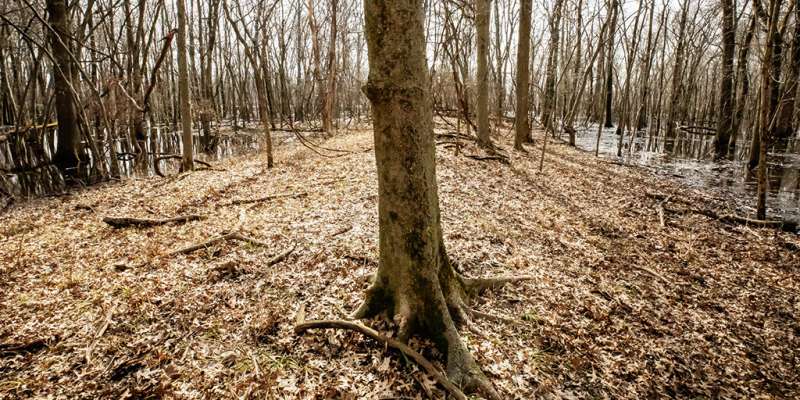
In A.D. 1050, when the people of Cahokia began to construct their city, they used trees to build the frames of their homes, temples, stockades and other structures. The city grew large and they quickly denuded the site, leaving open vistas in every direction, Pauketat says. The mounds, ponds and pathways were visible from most parts of the city, and their relationships to each other and to the sun and stars were more obvious than they are now.
The climate of 1050 was a lot like today's, but "a little warmer and a little wetter," Pauketat says. Within 200 years of the city's founding, however, decades of drought had parched the landscape. By 1350, after four or five generations of violent strife – evidenced by the physical remains of people who died of arrow wounds and scalping – Cahokia was abandoned.
We finally make our way to the causeway, climbing up out of the swampy water and onto this narrow bridge of dry land. Pauketat tells me it is about 60 feet across: "four-lane-highway wide." Water fills the low areas on either side.
As we walk south along the causeway, Pauketat talks about his research group's theory about the people who built it. The temples and homes – the living neighborhoods of this part of Cahokia – were established near the plaza and Monk's Mound. The more southern parts of Cahokia were reserved for burial mounds. Pauketat sees the causeway as a ritualistic space where people journeyed south, away from the land of the living and into the land of the dead.
"The watery world is really important to Native Americans," he says. "In eastern North America and Mesoamerica, water is the barrier between this world and the underworld – the realm of the dead.
"All these native stories talk about what happens when you die: Your soul goes to the edge of the world, jumps into the Milky Way and climbs into the sky," Pauketat says. "So, a soul would travel from the world of the living down the causeway. You'd bury them down there and then they'd hop into the sky.
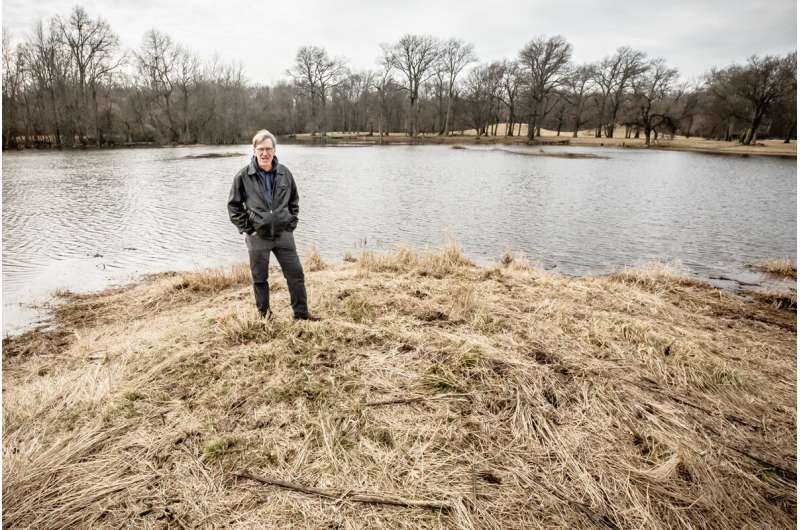
"Of course, we haven't proved that that's what this means," he says, and laughs.
But he tested his idea by visiting Cahokia virtually via Google Earth. By standing on top of Monk's Mound facing south on the pre-dawn mornings of the summer and winter solstices, he could see – more or less – what the Cahokians saw.
"People in North and South America often marked where the Milky Way is at different times of the year," he says. "It turns out that on the days of the solstices, when the Milky Way is most vertical, if you stand on Monk's Mound right before sunrise, the Milky Way arises out of the end of the causeway and kind of arcs across the sky and then taps back into a line that the causeway marks."
At the end of our hike, we pass an irregularly shaped borrow pit with a low mound jutting into one end. In the 1970s, researchers found the remains of a 12-year-old child in the water at the base of this mound. Pauketat tells me the mound was likely the site of a water shrine, and the child part of a ritual sacrifice. He wanders over to the mound, which to him is emblematic of the many mysteries associated with this site. Farkas, Aiuvalasit and I stand on the road watching him explore.
"Tim loves that mound," Farkas tells me. "He does glowingly and dreamily speak of it often."
Provided by University of Illinois at Urbana-Champaign



















